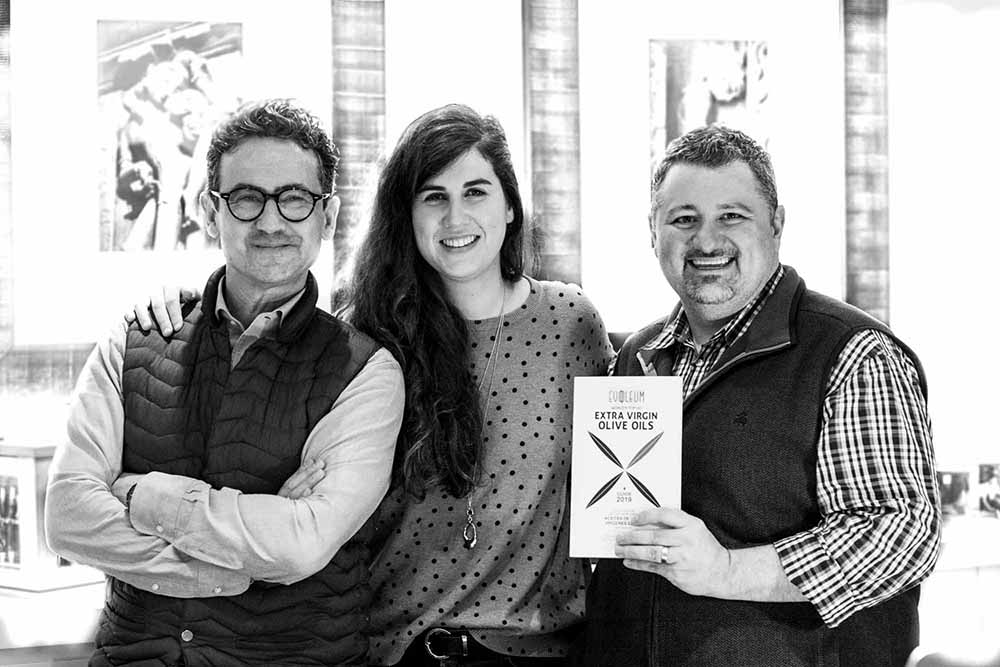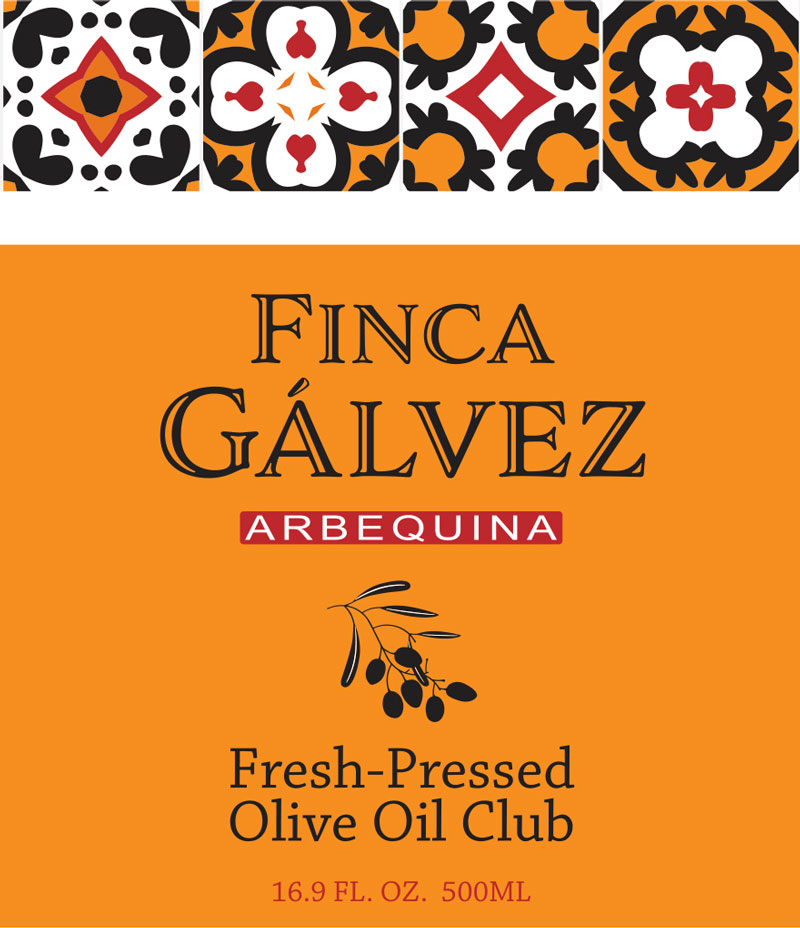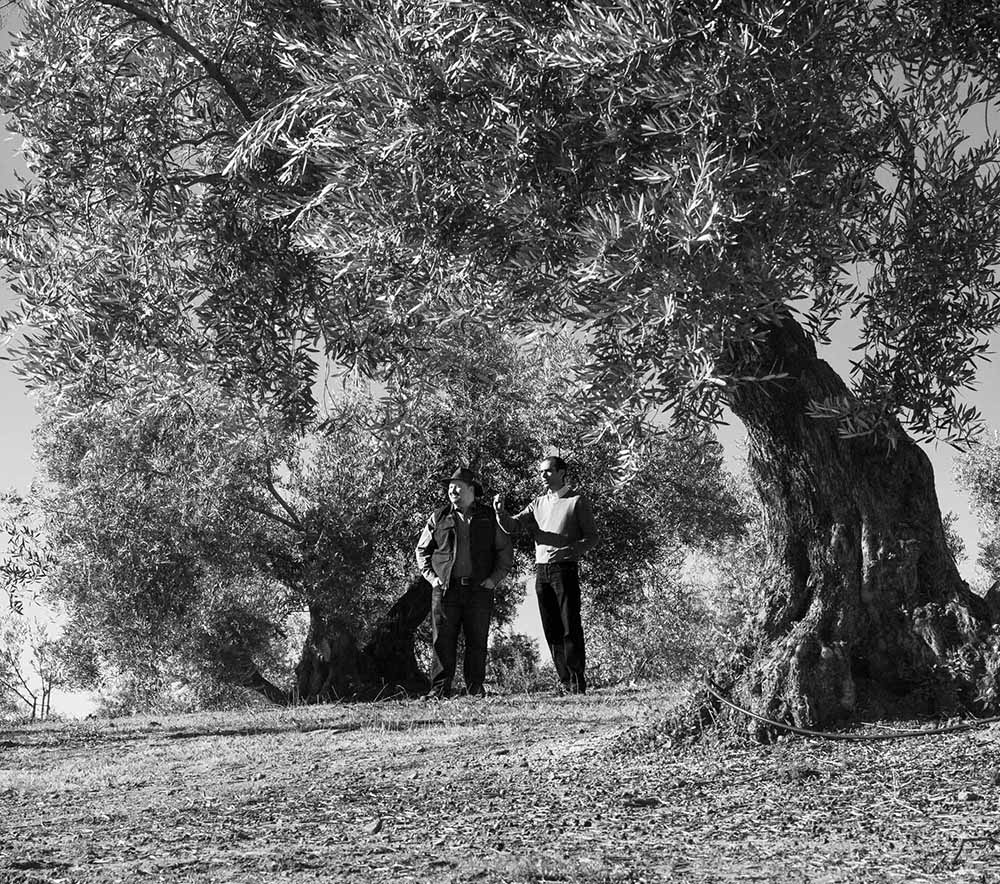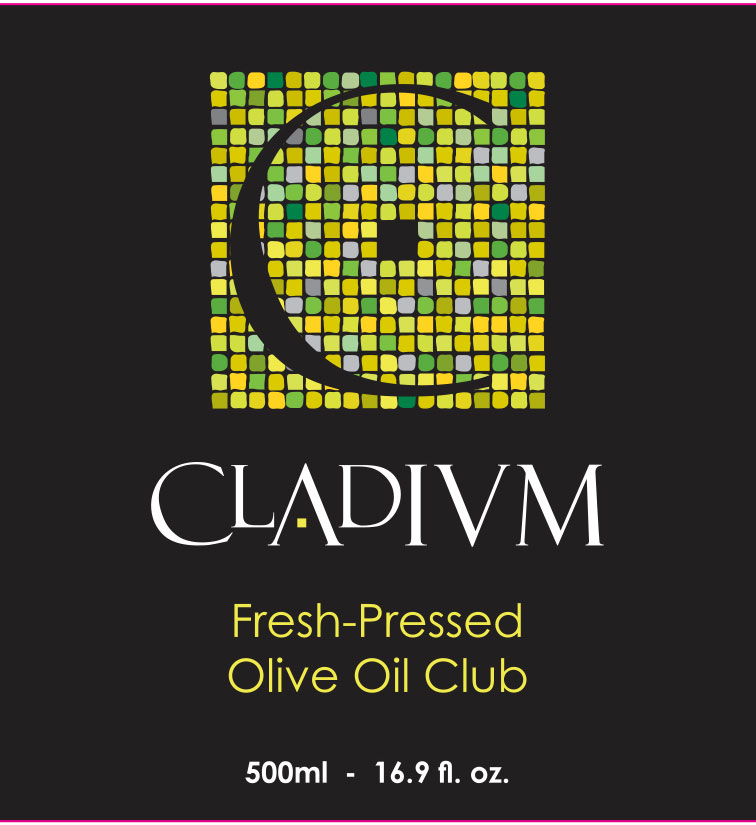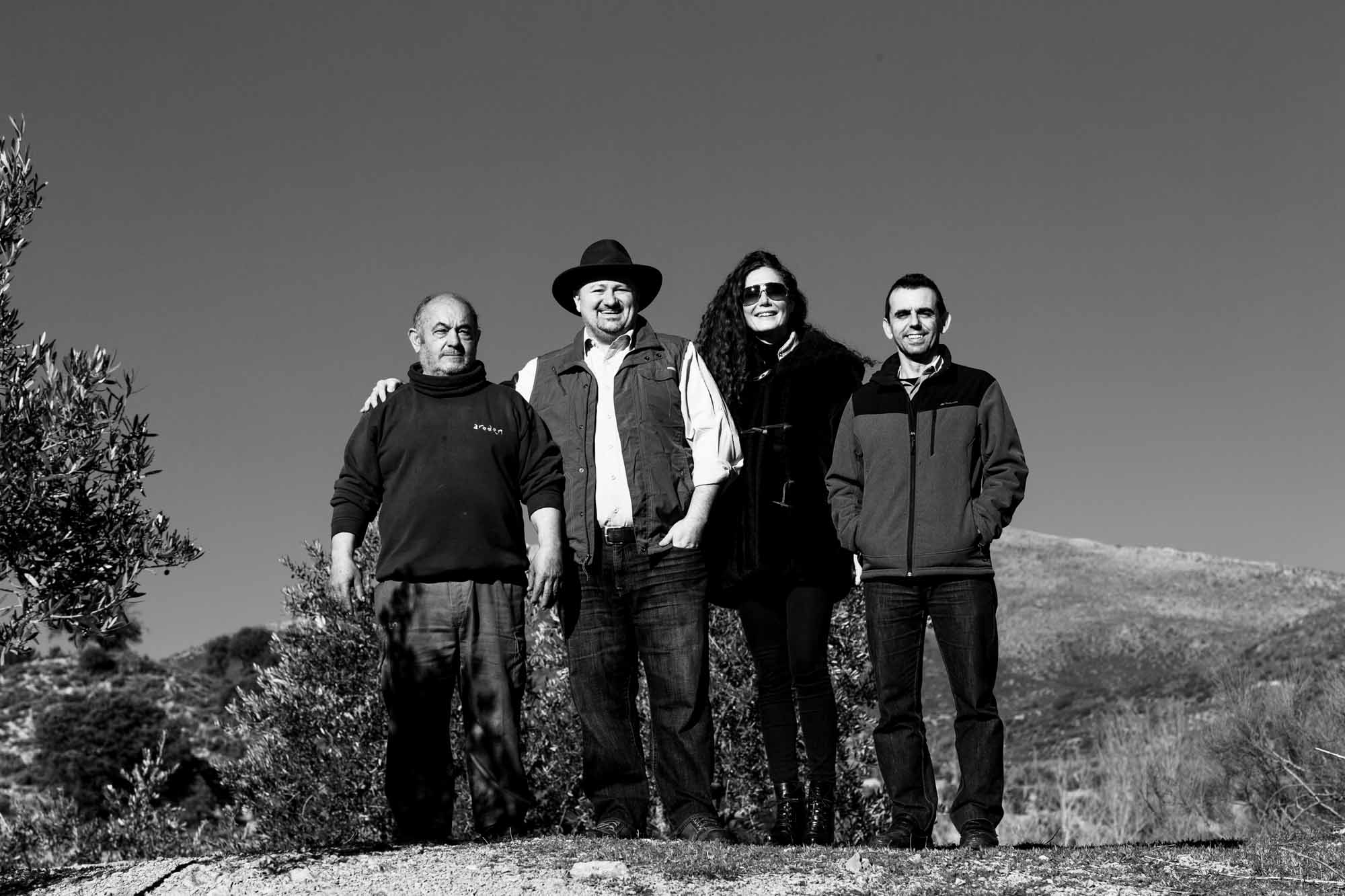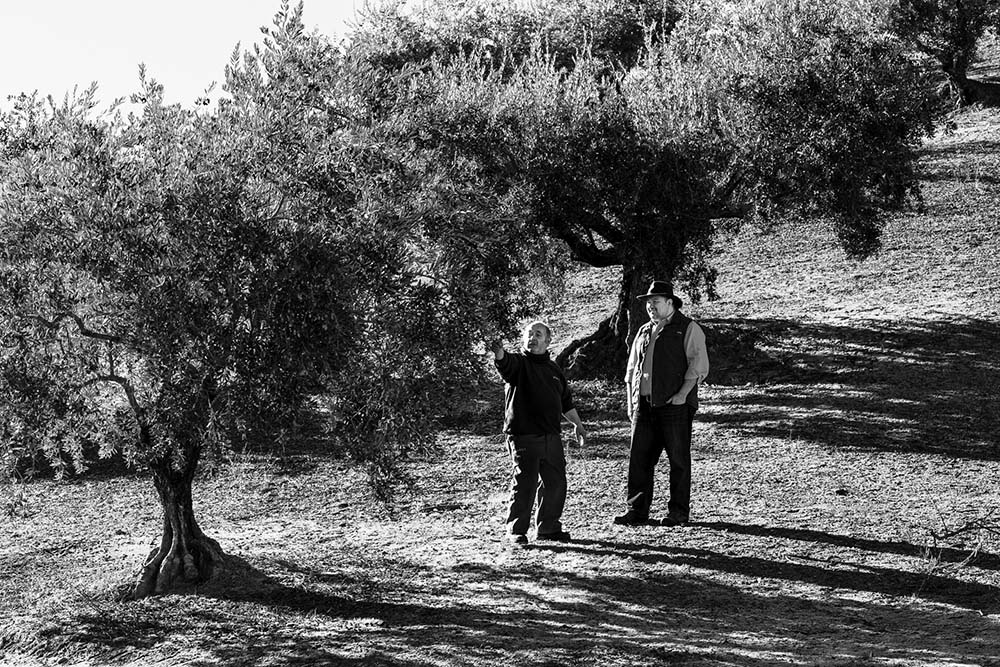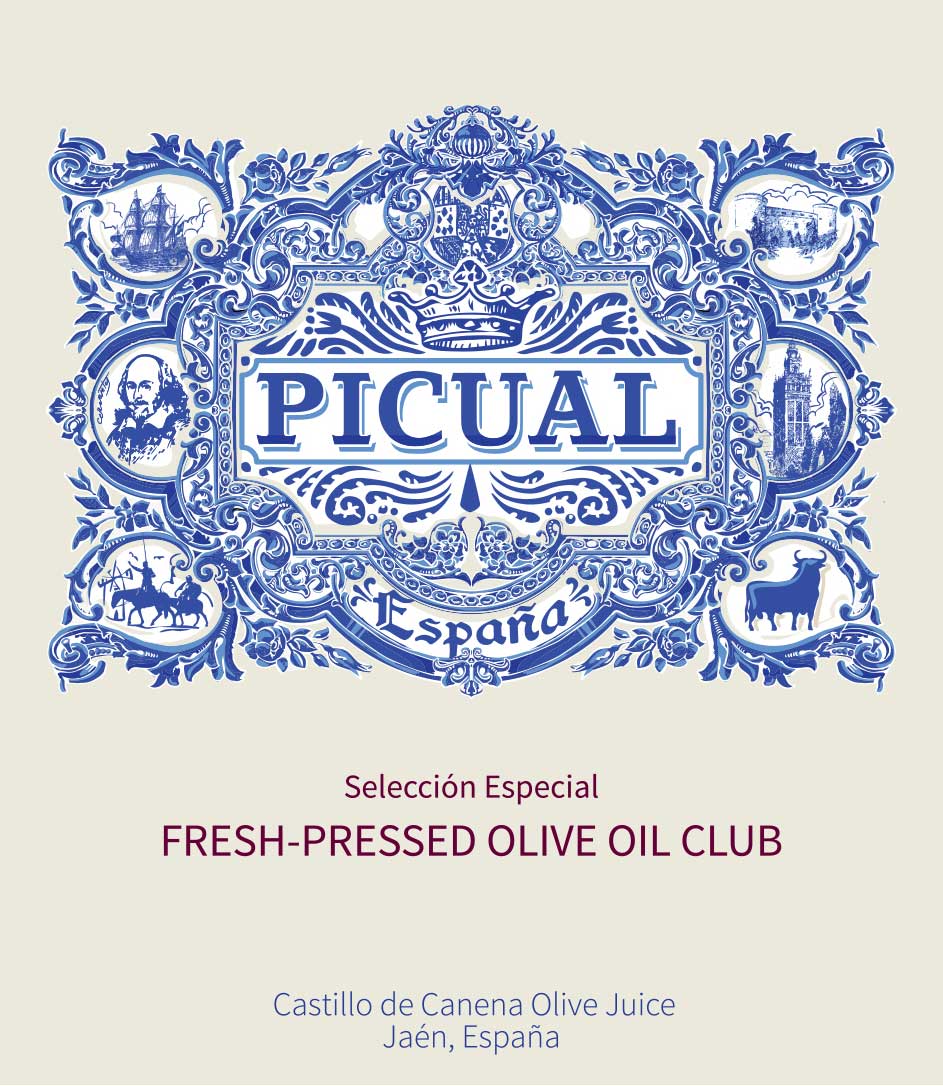For Your Summer Dining Pleasure, Three Exquisite Fresh-Pressed Extra Virgin Olive Oils from Chile!
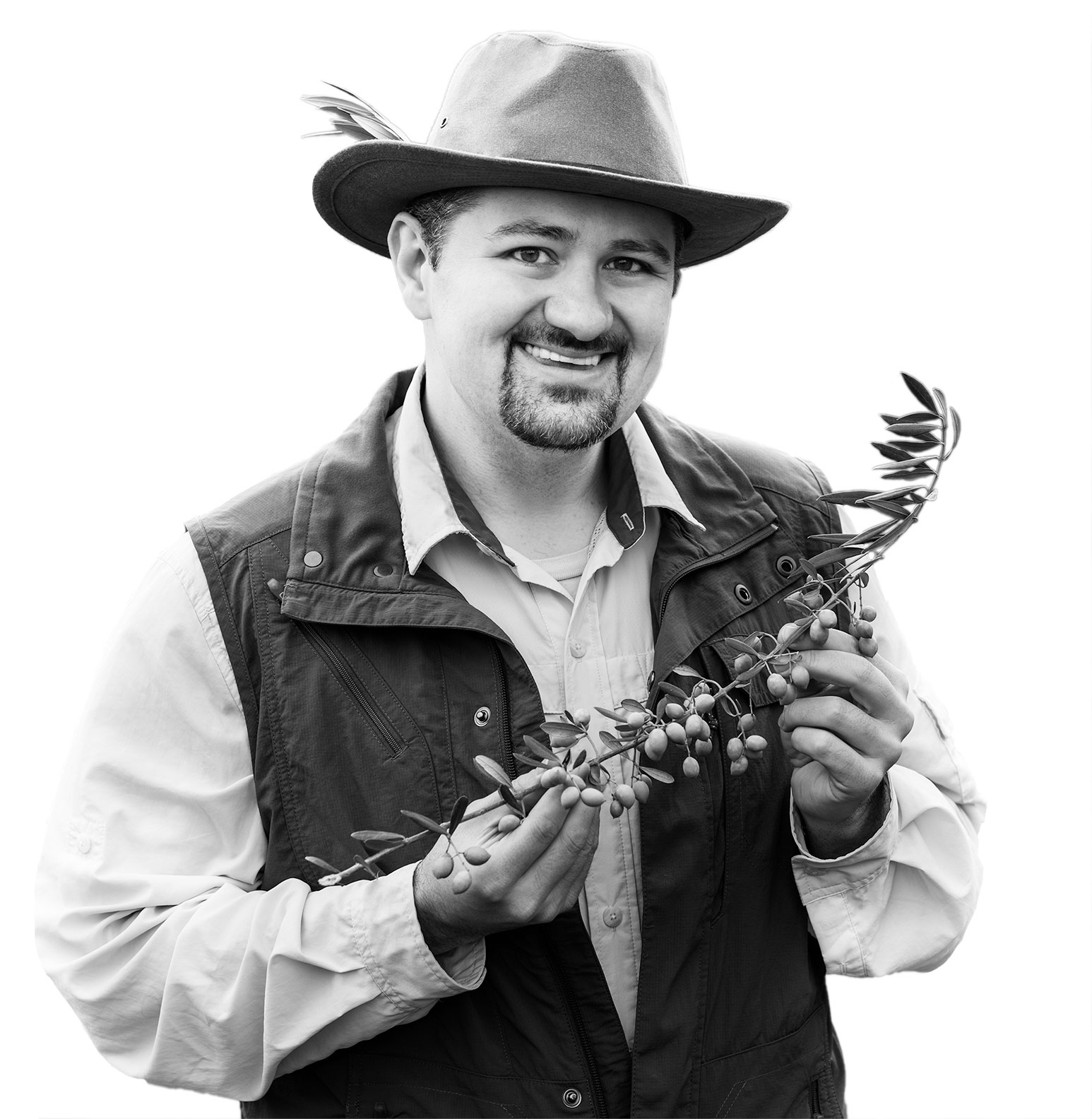
- Rushed to your table from “the ends of the Earth” by jet at their peak of flavor, these beauties are all from award-winning New World producers.
- All have been certified by an independent lab to be 100 percent extra virgin.
- You will be among the few lucky Americans to enjoy fresh-pressed olive oil with summer’s bounty.
- All three were pressed exclusively for Club members and are available nowhere else!
Sandwiched between the Andes Mountains and the Pacific Ocean is Chile, a slender, sinuous country that for me, has become an invaluable hunting ground for premium extra virgin olive oil. The colorful fall harvest is just winding down there, and once again, my relationships with Chile’s best producers ensure you will have only the freshest, finest olive oils on your table to splash on sun-ripened tomatoes and other delights when they appear in gardens and markets.
Chile is a horticultural wunderkind, one of the New World’s largest alternate-season suppliers of apples, blueberries, stone fruits, and grapes, the latter often exported as wine.
Growing olives, which are also fruits, was an easy next step.
Realized Dreams, Despite Prolonged Drought
About 15 years ago, I envisioned a unique club that would put fresh, amazing olive oils in the hands of North Americans. Meanwhile, farmers in central Chile were formulating plans to grow olive trees, inspired by the region’s Mediterranean climate, rocky, well-drained soil, and ready access to an agriculturally gifted workforce—you can’t throw an avocado here without hitting an agronomist. A decade later, these rookie growers were pocketing golds, silvers, and “best in class” awards in prestigious olive oil competitions. (The producers of your oils have all been named in the top 20 of the best in the world by the olive oil bible, Flos Olei.) Many Old World producers, sensing they were being bested at their own game, were stunned by this upstart on the other side of the globe. There were even whispers about “the Chilean threat.”
Chile actually produces less than 1 percent of the world’s olive oil, a drop in the bucket. Which explains why its oils are rarely spotted on US shelves. Also, few growers have the resources to promote their own brands, meaning the majority of Chile’s oils end up in the bulk market. They are either consumed domestically or exported to Brazil, Asia, or Italy, which is currently experiencing a serious olive oil shortage due to a string of disappointing harvests.

Natural barriers protect Chile from many of the scourges that have bedeviled olive growers in other countries, including pathogens and pests. However, Chile’s been battling a severe drought for several years. As my plane cleared the Andean peaks upon descent (whew!), I noticed they were capped with even less snow than last year. (Many farmers rely on run-off to irrigate their trees, so lack of snow is a problem.) The landscape looked more parched than I remembered, populated with cacti and thorny espiña bushes. Water levels were visibly down in rivers, lakes, and reservoirs.
Controlled water deprivation can actually enhance an olive oil’s complexity even as it depresses yields. Quality-conscious producers sometimes stop irrigating prior to the harvest to concentrate oils’ aromas and flavors.
In less than two decades, Chile has become a trusted New World source of premium extra virgin olive oil, more than 90 percent of it extra virgin. Located at the 34th parallel south, Central Chile is especially well suited to olive trees, thanks to its Mediterranean climate, well-drained volcanic soil, and agriculturally experienced workforce.
The farmers I worked with this quarter—as always, Chile’s most passionate and consistent producers—assured me they kept a close eye on their trees’ needs, even monitoring soil moisture levels with high-tech probes. Yes, rainfall had been less than average, but the olives were healthy. I toured the groves myself, of course, accompanied by olive expert and master miller Duccio Morozzo della Rocca. We wasted no time in selecting the fruit we wanted in our blends, knowing unexpected frosts are a devastating side effect of dry weather. By the way, Chilean olive growers tend to focus on a handful of olive varietals, including Arbequina, Arbosana, Picual, Coratina, Leccino, Koroneiki, and Frantoio. Blending them is like working with a palette of bright primary colors: a pleasing exercise that yields clean, elegant, vibrant results.
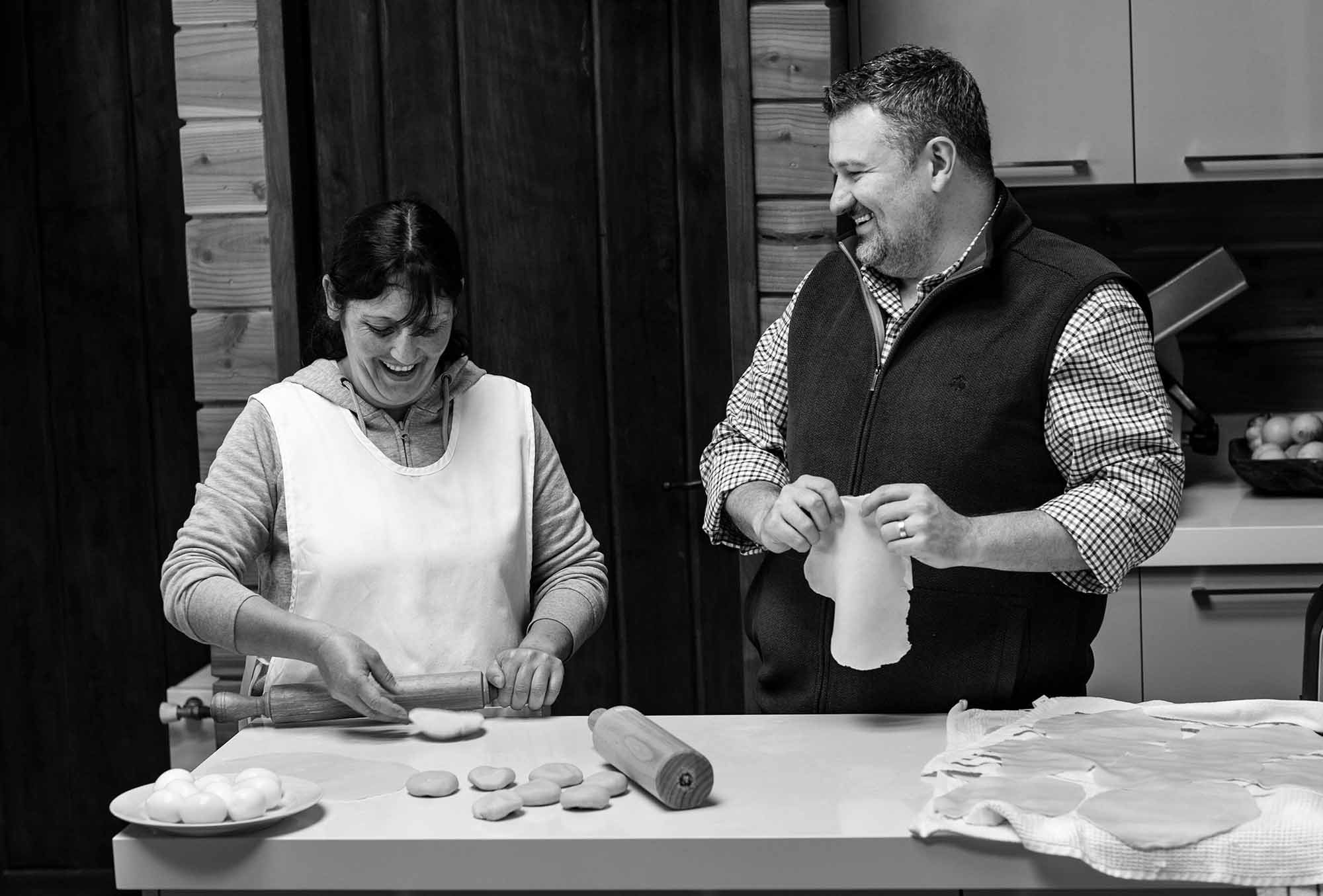
From the “Ends of the Earth,” Oils for Your Summer Table
When in an olive-producing country, I like to consult with university affiliates, trade organizations, professional tasters, etc. These meetings are mutually beneficial as we share knowledge, insight, and perspective. This time, I met with Pamela González, an agronomist at ChileOliva, an organization I’ve worked closely with since 2005. She explained that scientists at the University of Chile are analyzing 25 years’ worth of satellite images to better understand and predict patterns in Chile’s agricultural life. She’s hoping practical strategies will emerge to help olive farmers improve quality and production. Intrigued, I did a little reading on my own and learned that large experimental screens have been erected near Chile’s coastline to capture and condense fog, an untapped water resource for farmers. Genius!
On the long plane ride home, I reflected on how my long-ago dream dovetailed with the dreams of a few fearless farmers 5,000 miles and a continent away. Because of that fortuitous coincidence, you’ll soon have a wonderful taste experience, one I hope you’ll share with family and friends. (Do try one or several of the recipes I’ve included below.) I truly wish you could witness for yourself the farmers’ obvious pleasure and pride when their olive oils—the oils they’ve put their everything into—are selected for our Club. In a perfect world, you’d meet them personally and learn how thrilled they are to share their oils with discriminating palates. Please enjoy these lovely extra virgin olive oils in good health.
Happy drizzling!

T. J. Robinson
The Olive Oil Hunter®
This Quarter’s First Selection

I feel a frisson of anticipation each time my Merry Band of Tasters and I escape Santiago’s urban sprawl for the rural Colchagua Valley. The landscape during the harvest season is stunningly beautiful—reminiscent of a Cézanne painting, splashed with cobalt blue, burnt sienna, chrome yellow, viridian, and deep burgundy.
I’m not only eager to taste just-pressed olive oils from Chile’s most masterful producers, but my travel companions and I also have a reservation at Fuegos de Apalta (Fires of Apalta), a highly regarded restaurant owned by Patagonian celebrity chef Francis Mallmann. (He was featured on Chef’s Table, an original series by Netflix.) Mallmann endeared himself to me when he named the ingredients he couldn’t live without: “Very good salt, very good olive oil, very good red wine vinegar. With that you can do anything.” (See a Mallmann recipe I have adapted for your enjoyment below.)
The Colchagua Valley, about the size of Delaware and well endowed with natural resources, was carved by Pacific-bound runoff from the Andean peaks, particularly the Tinguirrica volcano. Colchagua means “valley of lakes” in the language of Chile’s indigenous people, the Mapuche. (Some 2 million Mapuche still live in South America, three-quarters of them in Chile.) In the late 1400s, the valley was invaded by the Incas, who introduced irrigation and farming to the region. But the Incas were really there for the gold. Not the maize or beans.
It’s ironic that I am also there for the gold—“liquid gold,” that is, the ancient world’s term for olive oil.
Olive trees are fairly new to Chile; most are less than 20 years old. One of the country’s olive pioneers was Alfonso Swett. A former berry farmer, Alfonso was vacationing in Spain in 2001 when inspiration struck: he realized the Colchagua Valley, with its fertile, volcanic soil and temperate Mediterranean climate, could provide olive trees with conditions similar to those found in Spain. Swett promptly enlisted the help of agricultural consultants before planting thousands of olive trees. He bottled his first extra virgin olive oil in 2006 and has been winning awards ever since.
For years, my friend, olive oil expert and master miller Duccio Morozzo della Rocca, has been advising the Swett family. When possible, he and I meet at the farm during the harvest. The team Alfonso assembled, including agricultural and operations manager, Ismael Heiremans, has dedicated itself to producing the finest olive oil possible.
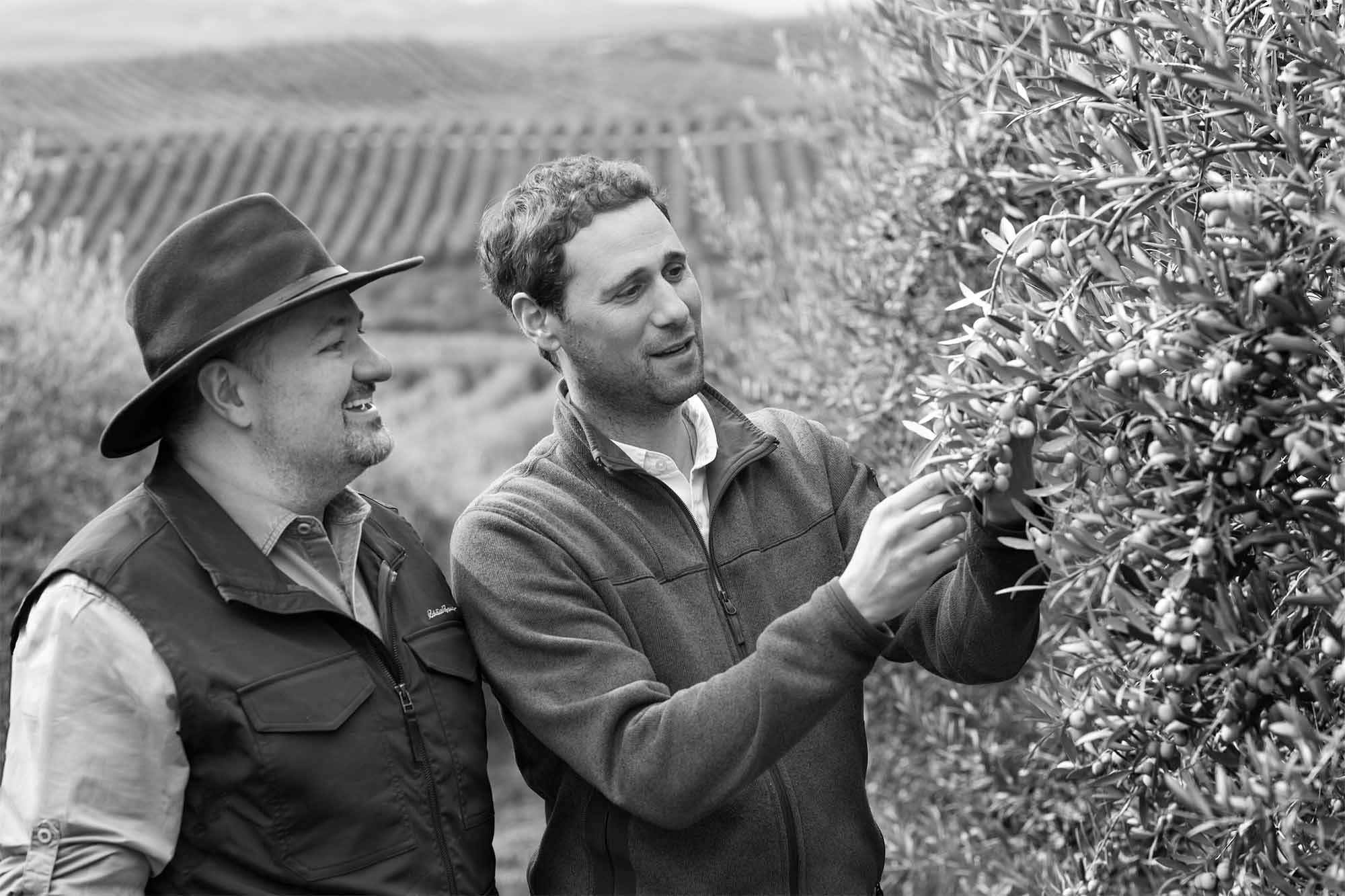
Duccio arrived a day ahead of me, and thanks to a preliminary tour of the farm’s vast acreage and many microclimates, tentatively identified groves with promise. The farm had half of its normal rainfall for the second year in a row—less water than the Sahara—but its irrigation system (fed by a large lake) provided the olive trees with sufficient moisture, Duccio assured me. He was especially captivated by two pockets of the varietal Arbequina—one on a sunny hillside and the other in a more shaded area.
Duccio is always compelled to touch the olives, to roll them between his fingers, even to take a bite. Ripeness, he says, cannot be determined by visual cues alone.
The Arbequinas Duccio and I selected were harvested and pressed within a day of each other at very cool temperatures. (All the olives harvested here are pressed within two hours of being picked.) We loved our first taste of the blend, the way the more aromatic oil from the sunnier slopes complemented the greener flavors of the other Arbequina. We could have left well enough alone. But no. A tiny amount of a powerful just-pressed Coratina, we discovered, completed the blend. So exciting! We couldn’t stop dipping Chilean bread in it—“Like a drug,” Duccio deadpanned. The combination is addictive.
Impressions and Recommended Food Pairings
Delicate and clean on the nose, a connoisseur’s olive oil. Expect whiffs of green tomato, butter lettuce, celery, green apple, chervil, fennel, green almond, citrus zest, and cinnamon. Very nutty (walnuts, almonds) and sweet in the mouth—think lemon meringue pie—with the subtle spiciness of white pepper and celery leaves, and grace notes of tender greens and white chocolate. Mild with a pleasant, lingering finish.
This elegant, well-balanced oil would complement shrimp, lobster, cod, sea bass, sole, fruit salads, chicken, rice, mashed potatoes, eggs, cauliflower, fresh peas and green beans, and raw vegetables. Try it with dairy, too, like mild cheeses, yogurt, or ice cream. Salad dressings or baked goods are other fantastic uses.
This Quarter’s Second Selection
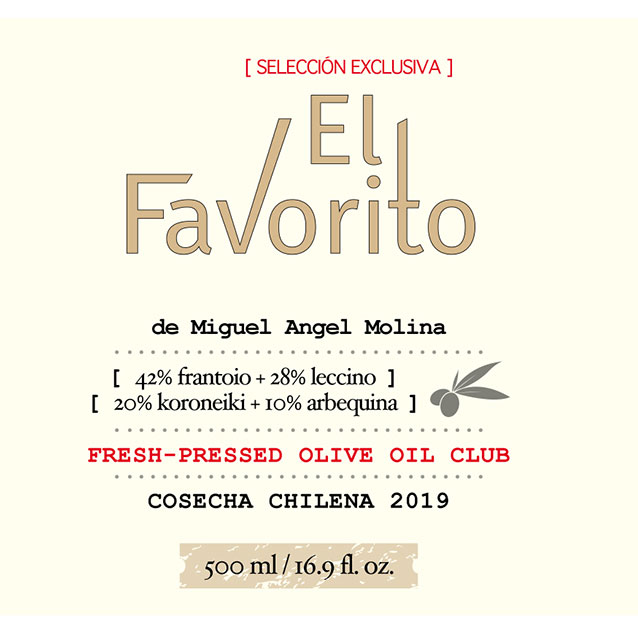
What a pleasure it was to return to the groves of the esteemed Miguel Ángel Molina, master miller and bonafide “olive whisperer.” Miguel and I met five years ago, and he continues to astound me with his ingenuity, technical skill, tireless devotion, and the consistent excellence of his olive oils.
In a parched season such as this one (continuing several years of severe aridity, initially called “mega-drought,” now seemingly the “new normal”), the Chilean olive growers who succeed despite the lack of moisture are those who have mastered the art of optimizing their scarce water resources.
As Miguel and I toured the groves by dirt bike and 4-wheel-drive ATV, he described the electronic sensors that his team has embedded in the earth to measure the moisture in the soil. Sensors are buried at 20cm (8-inch) intervals beneath the surface, with the deepest at 60cm (about 2 feet), in a network strategically distributed among the olive trees. This enables Miguel and his team to know when the trees have received adequate water—merely measuring the water administered above ground wouldn’t indicate how much reached the root system. With the high-tech accuracy of the sensors, just the right amount of water can be delivered to the trees.
Miguel was excited to show me the gorgeous fruit on the branches, eager to set aside the very best olives for my Club. (You can see us transferring a basket of just-picked olives to the bin on the back of his ATV in the photo on opposite page.) He oversees a dedicated team—numbering as many as 80 people during the harvest’s peak—that runs as smoothly and precisely as a Swiss watch. It’s no coincidence that Miguel manages time as efficiently as he manages water (both scarce, both precious), as he’s always on the move. On Mondays he commutes almost 3 hours to the farm, and on Friday afternoons he makes the return trip to spend the weekend with his wife and children in the town of Talca, in the south of Chile.
Miguel’s affinity for fruit developed during his earlier years of work in the agricultural industry, as a packer of apples and pears. I’ve noted that most of the best Chilean harvest teams include former fruit packers—they know, via experience and intuition, how to handle perishable produce. You can see it in the way Miguel moves through his groves, the way he picks and ever so gently squeezes an olive to test its maturity—as if it were a miniature avocado.
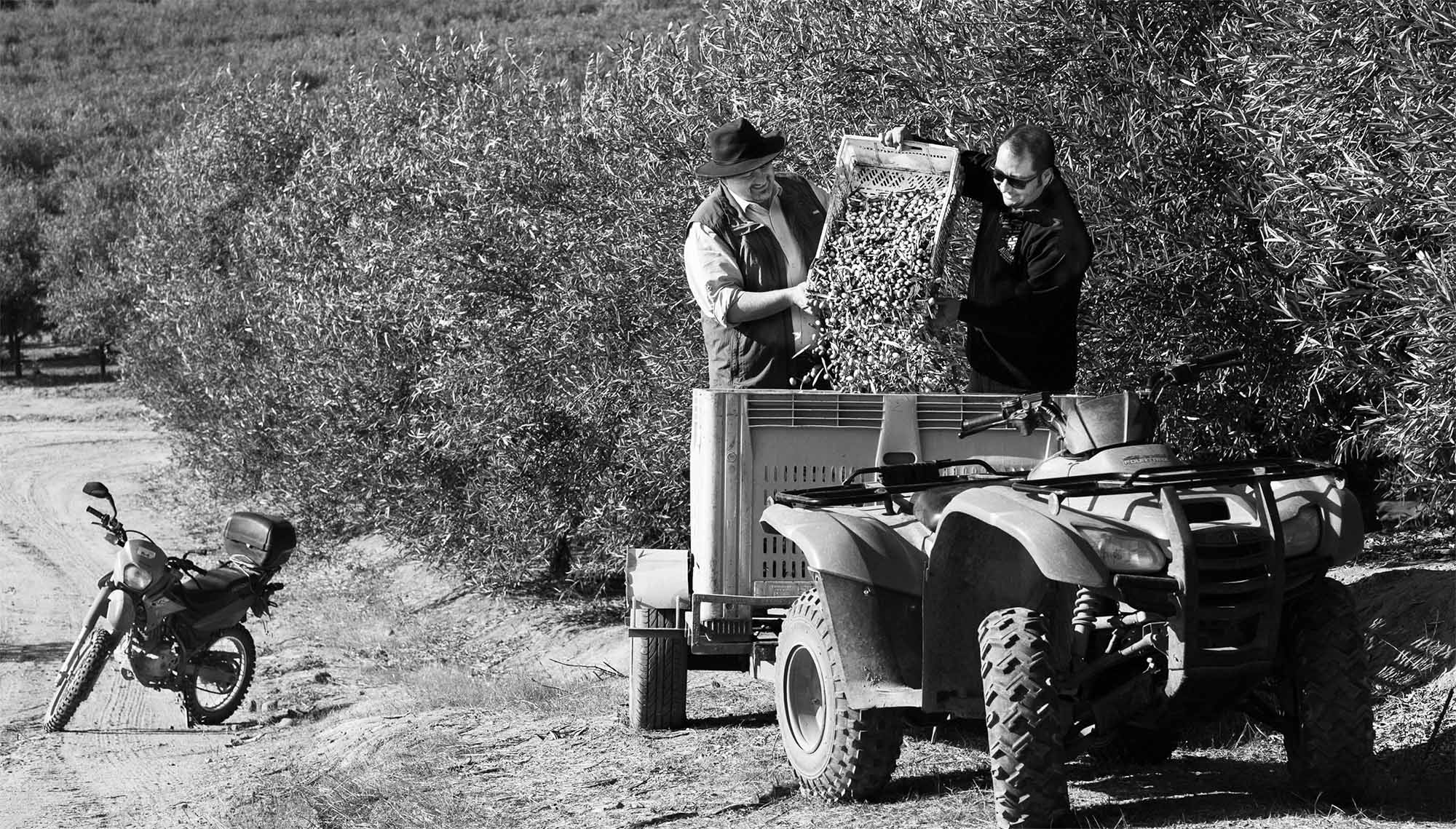
Miguel turned his focus to olives in 2004 when he set out to learn the fundaments of olive horticulture, expert milling, and blending from the famed Don Willy of the TerraMater groves, one of the pioneer artisans of the Chilean premium olive oil industry. (TerraMater, Latin for “motherland,” is the oldest producing olive grove in Chile, dating to the 1940s.) Miguel is on a constant mission of continuing self-education to optimize the olive’s journey from tree to table. Since 2014, he’s been the estate manager of the Alonso farm, located in Chile’s central O’Higgins region.
One sector of the groves is home to thousands of Frantoio and Leccino trees, planted together as cross-pollinators. These two Tuscan olive varieties are then harvested and pressed together, commingling their flavors from the start, which in my estimation creates more than just a blend—it’s a magical synergy of their qualities.
To this beguiling blend we added a bit of Greek Koroneiki, its flavors especially intense this harvest, to enhance the oil’s dimension, and a finishing touch of Spanish Arbequina, for its piquant spiciness and herbal notes. As the name “El Favorito” makes plain, this spectacular oil is an all-star roster of Miguel’s favorite olives this season. (Like a doting grandparent reassuring his clamoring grandchildren, though, I must insist that there is no “favorite” oil among the three I select for my Club members.)
Appetites whetted, we debuted this extremely food-friendly blend at a local workers’ joint, Don Achilles, a midday meal destination for the staff of several olive groves and fruit farms. The restaurant serves delicious home-style cuisine, the Chilean equivalent of “comfort food,” perfect for generous splashes of just-pressed olive oil. The staff at Don Achilles knows me and my Merry Band of Tasters by now (one of the many perks of this job, after years of cultivating relationships around the world), so when we requested extra pebre, the zesty Chilean version of salsa, they knew to bring us an entire plateful!
Impressions and Recommended Food Pairings
Several super-hero varietals from the Mediterranean meet on Chilean soil. This is truly an international oil! In the tasting glass, it’s both sweet and green (but very complex) evocative of vanilla, almonds, dark leafy greens, wheatgrass, and white pepper with hints of green banana, arugula, and wild mint. Intensely green in the mouth with bitterness lent by the flavors of radicchio, arugula, parsley, and dark chocolate.
A protracted and spicy finish makes this oil a natural with red meats (especially grilled meats), lamb, veal, white beans, tuna or swordfish, pasta salads, herbed potatoes, grilled sweet corn, vegetable soups, roasted carrots or broccoli, kale or spinach salads, avocados, sweet potatoes, or chocolate desserts. We’d even splash it in fruit smoothies!
This Quarter’s Third Selection
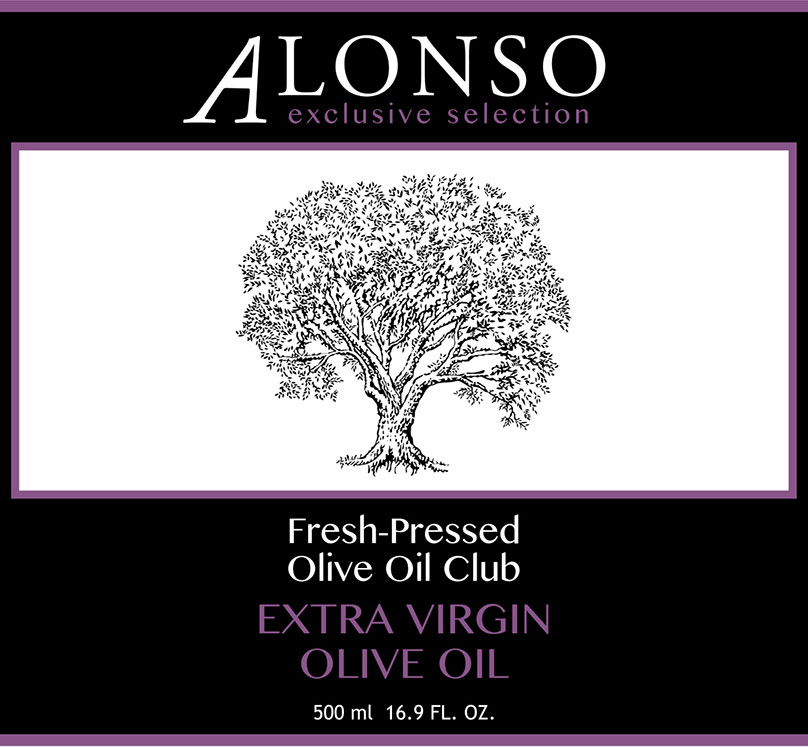
Nothing makes me happier, as the Olive Oil Hunter, than witnessing the ongoing successes of people I met when they were starting out. In less than a decade of production, the Alonso groves—run by brothers Juan Jose and Ignacio Alonso, founded by their father, Abel—have achieved an astounding degree of quality and consistency in their award-winning olive oils.
Their farm comprises about 960 acres of rugged terrain in central Chile’s O’Higgins Region, about an hour south of Santiago. None of the Alonsos had a background in olive oil production or even in horticulture: Abel, a self-made man whose family fled Franco’s regime in Spain when Abel was a teenager, had worked tirelessly to become Chile’s top shoe manufacturer. Upon announcing his retirement from the business, he set his sons to the task of helping build a family legacy of olive groves, which would remind him of his boyhood home in Spain’s Basque country.
As New World olive growers, they were able to construct and refine their practices from the ground up, with “no bad habits,” as I like to observe. Juan Jose explained, with characteristic enthusiasm, that as Chilean producers they have to be “quality actors.” In other words, because they cannot compete with global bulk producers such as Spain or Greece, artisanal farms such as Alonso must make their mark via excellence. Juan Jose laughed as he recounted that, in their first harvest season, they brought in a consultant from Italy. The Italian expert sized up these ambitious newcomers and recommended they dilute their oils during the pressing process to make them milder, which would also wash away the healthful polyphenols. “We waited until he left,” Juan Jose confided, “and then were, like, ‘Noooooo!’ That year, we won medals.”
Their streak of excellence is unbroken, with regular appearances on Flos Olei’s list of “Top 20 Farms in the World.” To give it personal context, consider that when I arrived at the mill this harvest, Juan Jose set before me an array of 10 just-pressed samples. Eight of the 10 blew me away—they were all contenders, and I knew we could make an extraordinary blend. Usually, even with top-tier farms, I’ll find only 1 or 2 oils out of 10 that make an impression on me.

Great oil depends on great equipment, and I’ve never seen such well-maintained machinery as the Alonsos’ state-of-the-art Alfa Laval olive mill. Juan Jose agreed, “It’s perfect—allows no air in.” This protects the olive paste from oxidation and preserves the perfume and flavor in the resulting oil. In the several years I’ve been visiting their farm, there’s never been a breakdown; the mill staff are as quick and savvy as an Indy 500 pit crew.
The Alonsos and I are perfectly aligned in our passion for educating the public about the wonders of fresh-pressed olive oil. Here, you’re reading my Pressing Report. Down in Chile, the Alonsos are running two thriving retail stores, with plans for a third (and dreams of someday having even more). Cozy, ground-floor storefronts—one in downtown Santiago, the other in a more upscale neighborhood—sell monocultivars (oils pressed from a single variety) as well as delectable blends, reflecting the season’s harvest, with trained and knowledgeable clerks to offer insight and answer questions. The Alonsos sell about one-fifth to one-quarter of their olive oil in their retail stores.
“Because people are used to lousy oil,” explained Juan Jose, “at the beginning they were freaked out by quality olive oil.” But quickly, once they taste the difference of excellent fresh-pressed oil, customers can never go back to the inferior stuff. It’s very much a brick-and-mortar parallel to the mission of my Club!
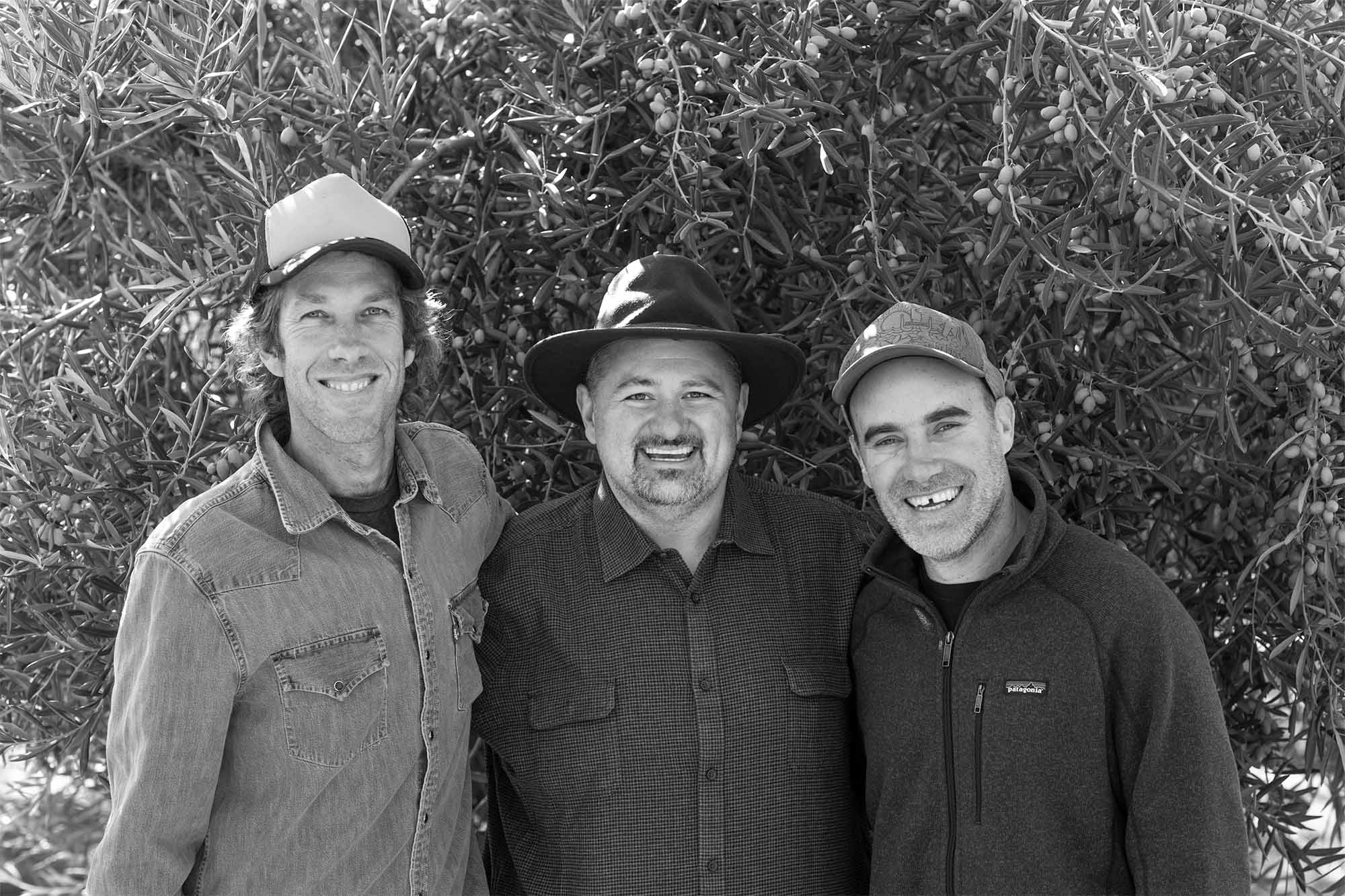
Juan Jose and his family are so proud to know my Club members will be enjoying the oil from their farm. “To think some person in Vermont, for example, will be tasting my fresh oil—that makes me so proud!” he said.
This robust blend is powerful and exciting, and I predict it’ll knock your socks off. In homage to the family’s Spanish heritage, it’s predominantly Picual, at its most intense, super-green and spicy. The addition of Koroneiki and Frantoio, just a touch, makes it “jump out of the glass,” Juan Jose notes. (He likes to call bold oils like this “medicine,” which, given the health benefits of olive oil and its millennia of history as a medicament, is entirely accurate.) We can’t wait for you to try it!
Impressions and Recommended Food Pairings
The most robust olive oil in this trio, an excellent example of an early harvest Picual, is intensely aromatic. We’re assailed with the scents of microgreens, tomato leaves, celery leaves, green apple, kiwi, and chopped fresh culinary herbs like sage, rosemary, parsley, and mint. It’s a juicy symphony in the mouth, teasing the tongue with healthful phenolic compounds and flavor harmonies. Green and grassy, incorporating the spiciness of celery leaves and the bitterness of green walnuts and Belgian endive. Chopped herbs, artichokes, kale, hazelnuts, and lime zest chime in. Expect an exciting, peppery finish.
A powerful oil such as this is the one to reach for when sun-ripened tomatoes are on the menu—bruschetta, caprese salad, gazpacho. Splash it on pizza, artichokes, hearts of palm, pasta, hummus, salmon, sardines, game meats, pork, duck, grilled chicken, potatoes, rice, aged cheeses, or salads made with dark leafy greens (spinach or kale) and fruit.
Olive Oil and Health
Adapted from an article by the American Heart Association, March, 7, 2019
In a group of healthy obese adults, eating olive oil at least once a week was associated with less platelet activity in the blood, which may reduce the tendency of blood to clot and block blood flow. These findings are according to preliminary research presented at the American Heart Association’s Epidemiology and Prevention/Lifestyle and Cardiometabolic Health Scientific Sessions 2019, a premier global exchange of the latest advances in population-based cardiovascular science for researchers and clinicians.
Platelets are blood cell fragments that stick together and form clumps and clots when they are activated. They contribute to the buildup of artery-clogging plaque, known as atherosclerosis, the condition that underlies most heart attacks and strokes, according to lead study author Sean P. Heffron, MD, MS, MSc, assistant professor at NYU School of Medicine and the NYU Center for the Prevention of Cardiovascular Disease in New York, New York.
Using food frequency surveys, researchers determined how often 63 obese, nonsmoking, nondiabetic study participants ate olive oil. The participants’ average age was 32.2 years and their average body mass index (BMI) was 44.1. Obesity is defined as having a body mass index (BMI)—a ratio of body weight to height—over 30.
Researchers found that those who ate olive oil at least once a week had lower platelet activation than participants who ate olive oil less often, and that the lowest levels of platelet aggregation were observed among those who ate olive oil more frequently.
“People who are obese are at increased risk of having a heart attack, stroke, or other cardiovascular event, even if they don’t have diabetes or other obesity-associated conditions. Our study suggests that choosing to eat olive oil may have the potential to help modify that risk, potentially lowering an obese person’s threat of having a heart attack or stroke,” Heffron said. “To our knowledge, this is the first study to assess the effects of dietary composition, olive oil specifically, on platelet function in obese patients,” said co-author Ruina Zhang, BS, an NYU medical student.
Some limitations of the study are that it relied on questionnaires completed by the participants; it measured how often they ate olive oil, but not how much olive oil they ate; and because it was observational, the study could not prove that eating olive oil will reduce platelet activation in obese adults.
Kudos from Club Members
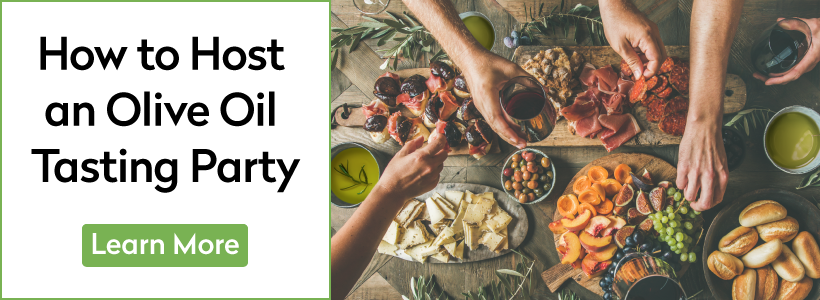
Recipes
 Chilean Salsa (Pebre) Lilly, the talented cook/housekeeper at the Don Rafael farm in Chile’s Lontue Valley, shared her recipe for Chile’s favorite condiment during one of our many visits to the farm. Serve it with bread, meat, or seafood. It’s best, she says, when made less than 2 hours ahead. view recipe
Chilean Salsa (Pebre) Lilly, the talented cook/housekeeper at the Don Rafael farm in Chile’s Lontue Valley, shared her recipe for Chile’s favorite condiment during one of our many visits to the farm. Serve it with bread, meat, or seafood. It’s best, she says, when made less than 2 hours ahead. view recipe Black Bean Hummus Unexpected company? You likely have everything you need in your pantry to quickly put together this twist on conventional hummus. view recipe
Black Bean Hummus Unexpected company? You likely have everything you need in your pantry to quickly put together this twist on conventional hummus. view recipe Chilled Tomato Soup with Créme Fraiche Like a refined version of gazpacho, this soup is refreshing and can be served as a starter or light main course. Make the soup and the herbed crème fraîche a day ahead of time, if desired, and refrigerate. (Let the crème fraîche come to room temperature before serving.) view recipe
Chilled Tomato Soup with Créme Fraiche Like a refined version of gazpacho, this soup is refreshing and can be served as a starter or light main course. Make the soup and the herbed crème fraîche a day ahead of time, if desired, and refrigerate. (Let the crème fraîche come to room temperature before serving.) view recipe Chimichurri Shrimp The bright flavors of freshly made chimichurri (one of South America’s most popular sauces) complement shrimp beautifully. Try it with other kinds of seafood, too, like grilled salmon, sea bass, or lobster. We have also enjoyed it with eggs and chicken. view recipe
Chimichurri Shrimp The bright flavors of freshly made chimichurri (one of South America’s most popular sauces) complement shrimp beautifully. Try it with other kinds of seafood, too, like grilled salmon, sea bass, or lobster. We have also enjoyed it with eggs and chicken. view recipe Grilled Salmon with Watercress and Cherry Tomatoes With nearly 3,000 miles of coastline, you can imagine how wonderful Chile’s seafood is. We prefer to grill salmon with the skin on, as it protects the fish from the high heat of the grill. view recipe
Grilled Salmon with Watercress and Cherry Tomatoes With nearly 3,000 miles of coastline, you can imagine how wonderful Chile’s seafood is. We prefer to grill salmon with the skin on, as it protects the fish from the high heat of the grill. view recipe Broccoli Rabe with Chile and Garlic Blanching in salted water before sautéing takes some of the bitterness out of broccoli rabe. view recipe
Broccoli Rabe with Chile and Garlic Blanching in salted water before sautéing takes some of the bitterness out of broccoli rabe. view recipe Olive Oil Chocolate Cake with Chocolate Ganache This moist cake proves chocolate and olive oil have an affinity for each other. On its own, the cake itself is vegan, as it contains no eggs or dairy. You can leave off the ganache and simply serve the cake with a dusting of powdered sugar and a few raspberries. view recipe
Olive Oil Chocolate Cake with Chocolate Ganache This moist cake proves chocolate and olive oil have an affinity for each other. On its own, the cake itself is vegan, as it contains no eggs or dairy. You can leave off the ganache and simply serve the cake with a dusting of powdered sugar and a few raspberries. view recipe Dry-Brined Peppered Filets Mignons with Cutting Board Sauce Feel free to substitute rib-eyes, T-bones, Porterhouses, pork chops, or even skirt steaks for filets mignons. (Cooking times may change, however.) You will love the way the olive oil-enhanced sauce complements the meat. view recipe
Dry-Brined Peppered Filets Mignons with Cutting Board Sauce Feel free to substitute rib-eyes, T-bones, Porterhouses, pork chops, or even skirt steaks for filets mignons. (Cooking times may change, however.) You will love the way the olive oil-enhanced sauce complements the meat. view recipe Perfect Roast Chicken with Salsa Verde Perhaps you have brined poultry in heavily salted water to season and tenderize it. But dry-brining accomplishes the same thing without taking up as much space in your refrigerator. A hot oven promotes crisp, golden-brown skin. The salsa verde (green sauce) is a piquant and colorful accompaniment. view recipe
Perfect Roast Chicken with Salsa Verde Perhaps you have brined poultry in heavily salted water to season and tenderize it. But dry-brining accomplishes the same thing without taking up as much space in your refrigerator. A hot oven promotes crisp, golden-brown skin. The salsa verde (green sauce) is a piquant and colorful accompaniment. view recipe Chilean Empanadas De Pino These are made the traditional Chilean way, filled with beef, onions, spices, and stuffed with hard-cooked egg quarters and brined green olives. view recipe
Chilean Empanadas De Pino These are made the traditional Chilean way, filled with beef, onions, spices, and stuffed with hard-cooked egg quarters and brined green olives. view recipe



